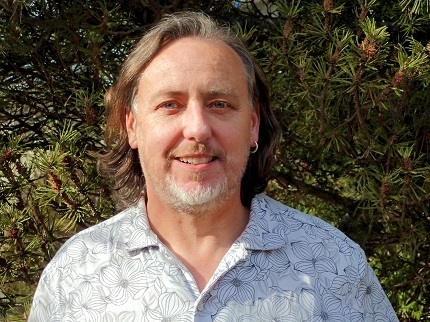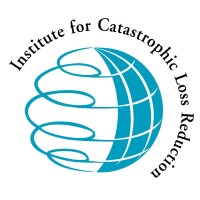The Team
CSSL Leadership
 Greg Kopp
Greg Kopp
Dr. Greg Kopp is the ImpactWX Chair in Severe Storms Engineering, Director of the Canadian Severe Storms Laboratory and a professor in Western University’s Department of Civil and Environmental Engineering. He received a BSc in Mechanical Engineering from the University of Manitoba in 1989, a MEng from McMaster University in 1991 and a PhD in Mechanical Engineering from the University of Toronto in 1995. His expertise and research relate to mitigating damage to structures during extreme wind storms such as tornadoes and hurricanes.
Dr. Kopp works actively to implement research findings into practice, currently serving as Chair of the ASCE 49 Standards Committee on Wind Tunnel Testing For Buildings and other Structures, and as a member of various other Building Code committees. A former Canada Research Chair in Wind Engineering, he is also the lead researcher for the Three Little Pigs Project at The Insurance Research Lab for Better Homes.
 David Sills
David Sills
Dr. David Sills is Director of the Northern Tornadoes Project. He received a BSc in Atmospheric Science and Certificate in Meteorology from York University in 1993, as well as a PhD in Atmospheric Science from York University in 1998. He worked for more than 20 years as a severe weather scientist with Environment Canada, and was awarded the CMOS Rube Hornstein Medal in Operational Meteorology for his research on Canadian tornadoes, storm nowcasting and mesoscale meteorology.
Dr. Sills also serves as Deputy Director of the Canadian Severe Storms Laboratory and is an adjunct professor with both Western’s Civil and Environmental Engineering Department and University of Manitoba’s Department of Environment & Geography. He serves as Associate Editor for the journal Atmosphere-Ocean and is a key member of the ASCE Wind Speed Estimation in Tornadoes Committee charged with developing the next generation of the EF scale.
 Julian Brimelow
Julian Brimelow
Dr. Julian Brimelow is the Director of the Northern Hail Project at Western. He holds adjunct professor positions in the Department of Civil and Environmental Engineering at Western, in the Department of Environment and Geography at the University of Manitoba, and in the Department of Earth and Atmospheric Sciences at the University of Alberta. He graduated from the University of Pretoria (South Africa) with a BSc in meteorology in 1993, completed his MSc at the University of Alberta in 1999, and earned his PhD at the University of Manitoba in 2011.
Dr. Brimelow has more than 20 years of experience working as an expert in severe convective storms, most recently with Environment Canada. He has participated in multiple research programs and has published extensively in the peer-reviewed literature. He draws on specialized observational datasets and numerical modeling to advance our understanding of severe and extreme weather, with a focus on hailstorms and hail.
 Connell Miller
Connell Miller
Dr. Connell Miller is the Director of the new Northern Mesonet Project, and an adjunct professor in Western University’s Department of Civil and Environmental Engineering. He received a BESc in Civil Engineering from Western University in 2015, and a PhD in Civil Engineering from Western University in 2020. He is also the coordinator for the summer undergraduate internship program for the Canadian Severe Storms Laboratory. His expertise is in the field of remote sensing, unmanned aerial vehicles (UAVs), instrumentation, and full-scale experiments.
Dr. Miller's current research is focused on alternative methods of estimating wind speeds in tornadoes such as the simulation of debris trajectories of vehicles; as well as alternative methods for detecting tornadoes through remote sensing tools such as vegetation indices and synthetic aperture radar.
CSSL Partner and Founding Supporter
 ImpactWX
ImpactWX
ImpactWX is a Toronto-based social impact fund that supports innovation through strategic partnerships, direct investments and charitable donations. Its mission is to enable organizations who, through scientific understanding and public awareness, work to improve people's response and safety during severe weather events. Initiatives are supported that:
- • build networks of collaboration across discplines and sectors,
• create opportunities for community engagement and learning,
• promote human-centred innovation and design, rapid prototyping and experimentation,
• translate research into practice and support learning through practice, and
• enable research and understanding that may not otherwise be possible.
The Northern Tornadoes Project was founded at Western University in 2017 with support from ImpactWX. And in 2024, Western University and ImpactWX launched the overarching Canadian Severe Storms Laboratory as founding partners, transforming severe thunderstorm research in Canada.
CSSL Advisory Council

Institute for Catastrophic Loss Reduction
The Institute for Catastrophic Loss Reduction (ICLR) is a world-class centre for multidisciplinary disaster prevention research and communication. ICLR is an independent, not-for-profit research institute founded by the insurance industry and affiliated with Western University. The Institute’s mission is to reduce the loss of life and property caused by severe weather and earthquakes through the identification and support of sustained actions that improve society’s capacity to adapt to, anticipate, mitigate, withstand and recover from natural disasters.
ICLR’s mandate is to confront the alarming increase in losses caused by natural disasters and to work to reduce disaster deaths, injuries and property damage. Disaster damage has been doubling every five to seven years since the 1960s, an alarming trend. The greatest tragedy is that many disaster losses are preventable. ICLR is committed to the development and communication of disaster prevention knowledge.
 Pelmorex Corp.
Pelmorex Corp.
Pelmorex Corp., founded in 1989, is an international weather information and data management company. Pelmorex owns and operates the weather brands The Weather Network, MétéoMédia, Eltiempo.es, Clima, Otempo.pt and Weather Source. It also operates Canada’s National Alert Aggregation and Dissemination System, part of Alert Ready.
Through constant innovation and entrepreneurship, Pelmorex has grown to reach consumers around the globe, has become one of the largest weather information providers and has broken new ground in providing data solutions and insights to businesses. Through harnessing the value of weather, Pelmorex is driven to make the world smarter and safer for consumers and businesses.
Academic Collaborators
 John Hanesiak
John Hanesiak
Dr. John Hanesiak's collaboration with the Canadian Severe Storms Laboratory provides critical research and meteorological expertise for western Canada. He is a professor in University of Manitoba's Department of Environment and Geography. Dr. Hanesiak received a BSc in Physics and Mathematics from University of Winnipeg in 1990, a Certificate of Meteorology from York University in 1991, a MSc in Atmospheric Science from York University in 1994, and a PhD in Geography from University of Manitoba in 2001. Prior to joining the University of Manitoba in 2001, he was an operational meteorologist with Environment and Climate Change Canada. Currently, he researches convection processes, severe/extreme weather and climate, storms, and surface-atmosphere interactions. He uses field measurements and numerical modelling to better understand the processes and interactions within these areas.
 Jennifer Spinney
Jennifer Spinney
Dr. Jennifer Spinney’s collaboration with the Canadian Severe Storms Laboratory provides essential social science research and anthropological expertise. She is an Assistant Professor with York University’s Disaster and Emergency Management Program and focuses her research on social interaction, risk and policy in the context of severe weather hazards and disasters. By drawing on qualitative research methods in her investigations, Spinney seeks to understand how people make meaning, assess and communicate risk, respond to uncertainty, and engage in protective action decision-making during tornadoes, floods and hurricanes. Dr. Spinney received an MA in Sociocultural Anthropology from Western University in 2010 and a PhD in Sociocultural Anthropology from Western University in 2019. Prior to joining York University in 2020, she was a post-doctoral scholar at the Cooperative Institute for Research in Environmental Sciences at the University of Colorado - Boulder.

Lisa Schielicke
Dr. Lisa Schielicke collaborates with the Canadian Severe Storms Laboratory to simulate past Canadian severe storms using high-resolution numerical weather models. She is an assistant professor at the Department of Physics and Astronomy at Western University. Dr. Schielicke received a PhD in meteorology from the Freie Universität Berlin, Germany, in 2017. Prior to joining Western University in 2024, she worked as an interim professor in general meteorology at the University of Bonn, Germany. She is interested in all types of extreme weather from large-scale atmospheric blocking to small-scale tornadoes with the aim to better understand vortex development and interactions as well as their impacts at different scales.
Institutional Collaborators

Wind Engineering, Energy and Environment Research Institute
The Wind Engineering, Energy and Environment (WindEEE) Research Institute was established in 2011 as a clear recognition of novel opportunities in wind research at Western related to the emergence of the world first three-dimensional testing chamber, the WindEEE Research Facility, and the potential to promote innovative research and extensive collaborations nationally and internationally.
The Institute acts as an enabler of wind-related research and industry-academic partnership opportunities stemming from the wide range of unique capabilities at the facility. From complementing user expertise to matching commercial and academic funding, the institute aims to multiply the initial infrastructure investment and continuously expand the user group, both nationally and globally.
 High Impact Weather Research
High Impact Weather Research
The High Impact Weather Research (HIWR) section of ECCC’s Meteorological Research Division conducts research that contributes to understanding, detecting and predicting high-impact weather (HIW) events, and activities that contribute to the application of cloud and precipitation physics to HIW, nowcasting, weather forecasting, climate modelling, weather modification, and remote sensing. This is achieved by innovating observational technologies and techniques, laboratory work, field and aircraft campaigns, and space-based Earth observation. HIWR and the Northern Tornadoes Project will collaborate on remote sensing and in-situ data collection and related severe storm detection and nowcasting algorithms.

